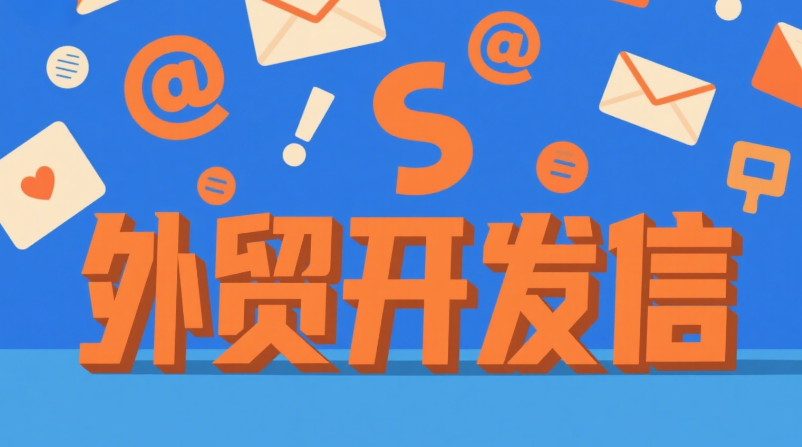
As the primary communication tool for international market development, the core goal of foreign trade development letters is to build trust, stimulate interest, and promote inquiries . Different industries have different product attributes, customer purchasing behaviors, and market environments, so the structure and content of their development letters are significantly different.
For example, in the machinery manufacturing industry , due to the complex technical parameters of products and long customer decision-making cycles, development letters need to highlight technical advantages and certification qualifications; the 3C electronics industry emphasizes the selling points of new products and supply chain advantages, and combines market feedback to improve persuasiveness; the consumer goods industry pays attention to design aesthetics and scenario-based marketing, and adopts a flexible trial order policy; and the chemical raw materials industry pays more attention to formula patents, compliance documents and cost advantages.
The key points of the structure include technical parameters, certification qualifications, and successful cases . For example, highlighting the equipment accuracy of "ISO9001 certification, error ≤ 0.01mm" and attaching real project pictures will help convey professional capabilities and trust.
Writing skills: It is recommended to use engineering language, focus on introducing quantifiable benefits such as reduced energy consumption and increased production capacity, and avoid generalities. According to data from the China Machinery Industry Federation, the average purchase decision cycle in the machinery industry is about 6-9 months, so the letter needs to reflect the value of long-term cooperation.
The core content focuses on new product selling points, supply chain advantages and market feedback. For example, highlighting ROHS environmental certification, combining market data of "repurchase rate on German e-commerce platforms reaches 35%", and supplemented with screenshots of online celebrity reviews of mobile phone accessories as case evidence, can enhance the affinity and persuasiveness of the letter.
According to iMedia Consulting, electronic products are updated rapidly, and the procurement decision cycle is about 3-6 months. Development letters need to emphasize efficiency, supply chain stability and quality advantages.
The structure should highlight design aesthetics, scenario-based marketing, and a flexible small-order trial policy. Seizing seasonal hot spots, such as "the same elements as the 2025 Fall/Winter Paris Fashion Week," and offering the advantage of a minimum MOQ of 50 pieces can help dispel customers' concerns about testing the waters.
Combined with supermarket display pictures or KOL product promotion video links, customers can quickly establish visual trust. According to Euromonitor International, the consumer goods market pays more attention to experience and brand stories, and development letters should use emotional resonance to deepen impressions.
Focus on formula patents, compliance documents and cost comparison. Use charts to display temperature resistance and purity data, mark REACH test report numbers, and enhance trust. Provide free sample applications and test cycle instructions to effectively accelerate purchasing decisions.
According to the China Chemical Information Center, the procurement decision-making cycle is long, and compliance and cost-effectiveness need to be emphasized to ensure procurement security and long-term cooperation.
Main body logic: First identify the problem, propose a tailored solution, and support it with strong evidence, for example, "We noticed the challenges you faced in processing yield; our XYZ technology helped customer ABC reduce defects by 15%."
Closing strategy: Provide a clear next call to action, such as “Would you like to schedule a tech demo?” or “Reply ‘1’ for a free sample.”
AI Content Factory: Automatically generate multilingual development email drafts embedded with industry-specific technical terminology - such as ISO certification for mechanical products.
Global Trade Radar: Obtain accurate importer data and purchasing cycles through customs transaction analysis to accurately target potential customers.
SEO Optimization Center: Using big data to craft subject lines has been shown to significantly increase open rates.
More than 1,500 foreign trade companies have used its AI-driven "Super Sales Assistant", and the average response rate has soared by 200%. We encourage new users to sign up for a free trial immediately to empower their entire development email process from email creation to customer interaction with intelligent automation.
.png?x-oss-process=image/resize,h_100,m_lfit/format,webp)
.png?x-oss-process=image/resize,h_100,m_lfit/format,webp)

.png?x-oss-process=image/resize,h_100,m_lfit/format,webp)
.png?x-oss-process=image/resize,h_100,m_lfit/format,webp)
.png?x-oss-process=image/resize,h_100,m_lfit/format,webp)
.png?x-oss-process=image/resize,h_100,m_lfit/format,webp)
